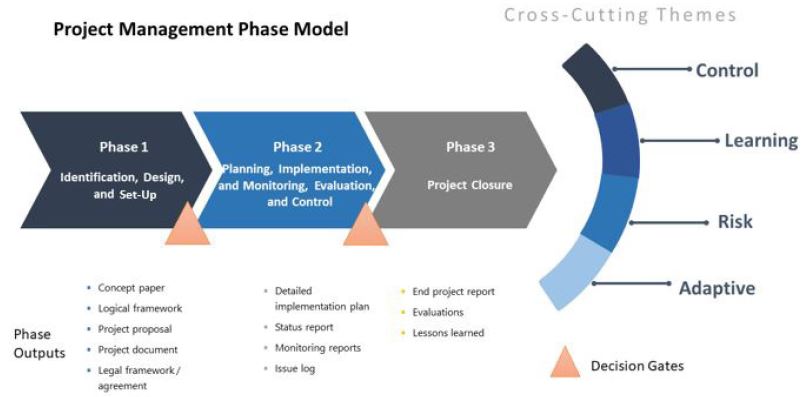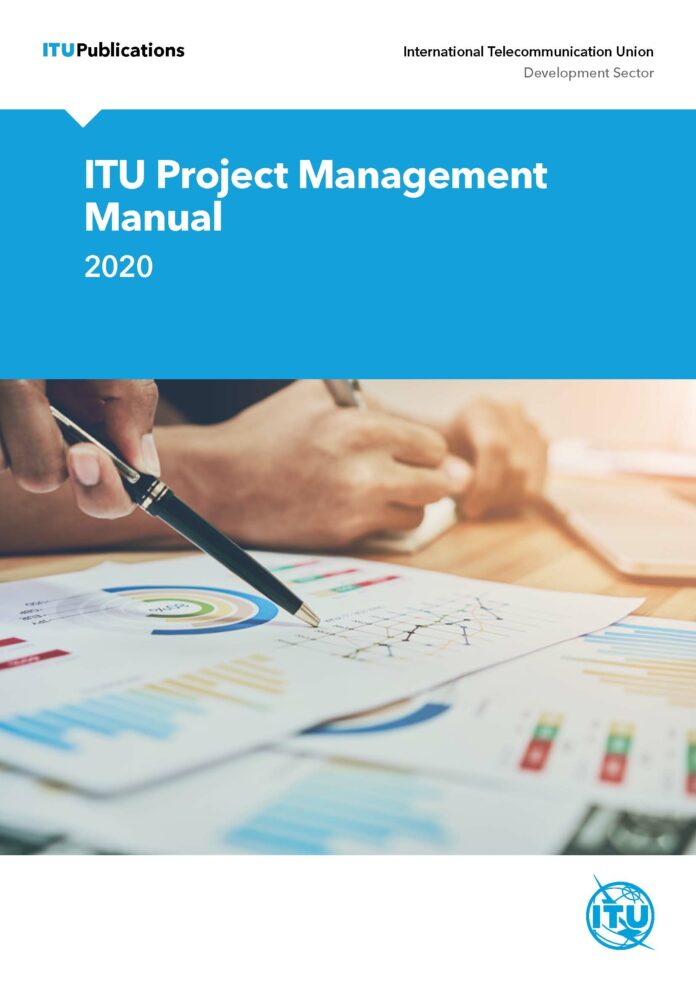Introduction to the Project Management Manual
The main purpose of this Manual is to lay down the principles, rules, policies, procedures, and practices governing the design, planning, implementation, and closure of projects at the International Telecommunication Union (ITU).
This Manual shall apply to all ITU projects regardless of the source of funding – such as but not limited to the regular budget, extra-budgetary funding sources (funds in trust), and ICT Development Fund – unless otherwise provided for in this Manual.
The application of this Manual by ITU staff involved in project design, planning, implementation, and closure does not replace the general requirement for ITU staff members to familiarize themselves with all relevant ITU rules, policies and procedures and ensure compliance therewith. Each involved ITU staff member will, moreover, exercise his/her duties with the utmost care.
The Project Phase Model
The project lifecycle consists of three phases, with each phase containing processes and tools that build upon the previous phase to create the components project managers need to manage their projects effectively.
The phase model in Figure 1 illustrates the three phases and the outputs for each phase. Decision gates are represented by triangles, occurring at the end of each phase. Additional decision gates will be integrated into each phase, indicated in the process charts at the beginning of each phase and highlighted in light-blue boxes throughout the Manual.

Cross-cutting themes are portrayed as framing the phase model. These themes constitute guidelines on how to approach project management at ITU and may differ depending on the project, its size and complexity, and the experience of the project manager. Guidelines on how to approach the cross-cutting themes have been included in each phase of the Manual.
How the Manual is organized
Each phase is organized in the same manner and consists of the following:
- Process Maps: There is a process map at the start of each phase that outlines the high-level information, documents, tools, and processes required for each phase, including inputs and outputs for the phase.
- What is this all about?: This section introduces the phase and provides a general overview as to why this phase is important and how to navigate its contents.
- Cross-Cutting Themes: The cross-cutting themes serve as guidelines on how to approach project management; a brief overview of what to take into account in their regard is provided in each phase, however, the approach needs to be flexible and may differ from one project to the next.
- RACI: RACI stands for: Responsible, Accountable, Consulted, Informed. This tool is provided at the beginning of each phase and sub-phase to highlight who should be involved in each activity, process, or decision gate within that phase.
- Inputs: Inputs detail all documents and tools needed to complete the processes for the phase.
- Process: Defines and provides examples of all processes and tools required to achieve the phase output. The processes are mandatory, but the tools outlined in them are suggestions. If the project managers have other tools in their toolkits they prefer, those are acceptable too.
- Outputs: For each phase, a specific output should be produced based on the tools and processes highlighted.
At the end of this Manual, Role Profiles have been developed for the project manager, project governance, and the Partnerships for Digital Development Department – Project Support Division (PDD-PRJ), detailing the roles and responsibilities of each according to the project phases.





